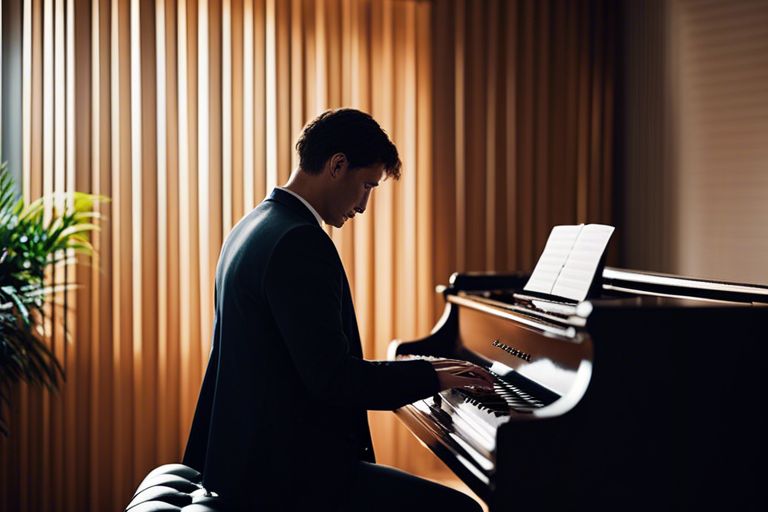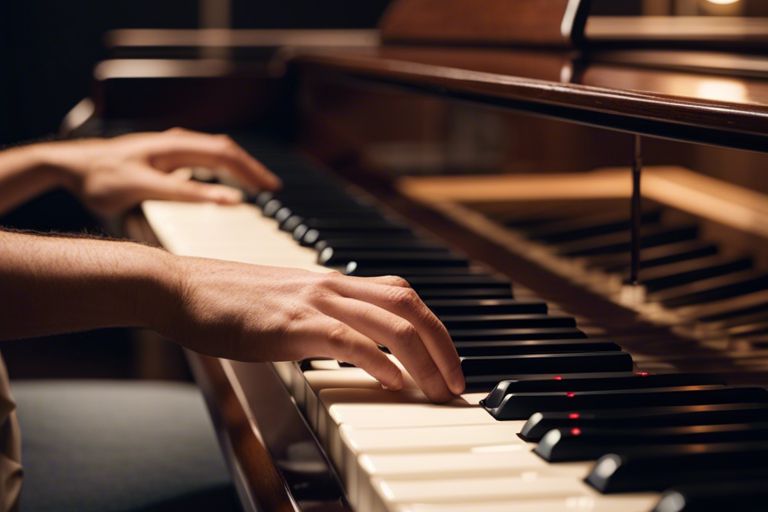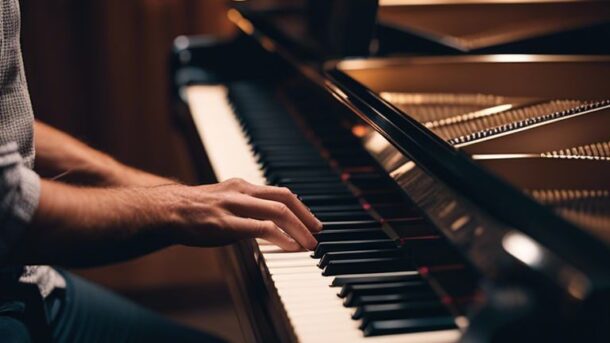Many aspiring musicians often wonder about the differences between learning piano and keyboards. You may find yourself debating which instrument is the right choice for your musical journey. Understanding the distinctions between the two can help you make an informed decision that aligns with your goals and preferences. Let’s probe into the key variances that set learning piano and keyboards apart.
Key Takeaways:
- Touch sensitivity: Piano keys are touch-sensitive and allow for greater expression in music, while keyboards may have non-weighted or semi-weighted keys that may not offer the same level of control.
- Tone and sound: Pianos produce sound through hammers striking strings, creating a rich and organic tone. Keyboards use electronic sampling to replicate piano sounds, which can sound slightly different and less authentic.
- Portability and versatility: Keyboards are compact, lightweight, and often come with a variety of sounds and built-in features, making them more versatile and easier to transport compared to acoustic pianos.
Instrumental Differences
Piano Mechanism vs. Keyboard Electronics
Before delving into the differences between learning piano and keyboards, it’s important to understand the foundational dissimilarities in their mechanisms. On one hand, pianos are acoustic instruments that rely on a complex system of keys, hammers, and strings to produce sound. The weight and feel of the piano keys, coupled with the nuanced mechanics of the instrument, contribute to the rich, dynamic sound that pianos are known for.
Sound Production and Quality
Instrumental differences between pianos and keyboards extend beyond their mechanisms to the way they produce sound. While pianos generate sound acoustically through the vibrating strings and wooden resonance of the instrument, keyboards rely on electronic circuitry to mimic different instrument sounds. Keyboards typically offer a wide range of sounds and effects that can be manipulated at the touch of a button, providing versatility in your musical exploration.
When learning piano, you develop an intimate connection with the instrument as you interact with the keys and produce sound through physical exertion. This tactile experience contributes to the depth and expressiveness of your playing. On the other hand, keyboards offer diverse sound options and digital features that can enhance your creativity and experimentation with different musical styles.
Learning Curve
Piano: Developing Finger Independence and Strength
To truly excel at playing the piano, you will need to develop finger independence and strength. This means you must train your fingers to move independently of each other, allowing you to play different notes simultaneously. The process of developing this skill can be challenging and requires a great deal of practice and patience. Over time, you will notice an improvement in your ability to play complex pieces with ease and precision.
Keyboard: Focusing on Rhythm and Timing
The learning curve for keyboards often focuses more on rhythm and timing rather than finger independence. While playing the keyboard, you will learn to focus on keeping a steady rhythm and perfecting your timing. This is crucial for playing along with different genres of music and maintaining the flow of a song. By honing your skills in rhythm and timing, you will be able to play with other musicians seamlessly and enhance your overall performance.
Keyboard players often find that mastering rhythm and timing allows them to adapt to various musical styles and play with more versatility. This skill is necessary for playing in bands or recording sessions, where precision and timing are crucial for a polished performance.

Musical Expression
Now, when it comes to musical expression in piano versus keyboards, there are some key differences that can impact your playing style. If you want to dive deeper into this topic, check out Piano vs Keyboard: What’s the Difference When Learning ….
Piano: Dynamics, Pedaling, and Nuance
Piano playing offers a rich tonal palette through dynamics, pedaling, and nuanced touch. You can control the volume by how hard you strike the keys, giving you the ability to convey emotion and intensity in your music. Pedaling adds sustain, letting notes linger and blend together smoothly. Nuance in piano playing involves subtle variations in touch, creating expressiveness and depth in your performances.
Keyboard: Synthesizing Sounds and Effects
To synthesize sounds and effects on a keyboard, you have a vast array of options at your fingertips. Keyboards allow you to experiment with different instrument sounds, apply effects like reverb and chorus, and even create your own custom sounds. This versatility opens up a world of creativity, enabling you to explore various genres and styles in your music.
Nuance in keyboard playing involves exploring the endless possibilities of sound manipulation. With the ability to create and modify sounds on the keyboard, you can add unique textures and tones to your music, enhancing its overall impact and expressiveness.
Practice and Performance
Despite the similarities in practice techniques for both piano and keyboards, there are key differences when it comes to performance. Piano players often focus on producing a rich, nuanced sound by mastering touch sensitivity and dynamics on an acoustic piano. The acoustic piano requires proper maintenance to keep it in tune and optimal playing condition, adding an additional element to consider in your practice routine. The size and weight of a traditional piano also play a role in performance, as moving and positioning the instrument can impact your playing experience.
Piano: Acoustic vs. Digital, and Space Considerations
Pianos are typically large, heavy instruments that require a substantial amount of space in your home. Acoustic pianos have strings and hammers that need professional tuning regularly to maintain their sound quality. The acoustic piano’s touch sensitivity and sound projection are unique, offering a more authentic playing experience but limiting portability.
Keyboard: Portability and Versatility
When choosing a keyboard, you have the advantage of portability and versatility. Keyboards are generally lightweight and compact, making them easy to transport for performances or practice sessions outside of your home. They also offer a wide range of sounds and effects that you can experiment with, expanding your musical horizons and creativity.
Considerations for selecting a keyboard include the number of keys you prefer, the type of key action that feels comfortable to you, and the range of sounds and features that align with your musical goals. Keyboards come in various sizes and configurations, allowing you to choose one that suits your playing style and performance needs.
Digital keyboards offer additional features such as built-in metronomes, recording capabilities, and headphone outputs for silent practice. These technological advantages can enhance your practice sessions and performance opportunities, providing you with more control over your sound and musical development.

Cost and Accessibility
Piano: Investment and Maintenance
Not only is purchasing a piano a significant investment upfront, but there are ongoing maintenance costs to consider as well. Tuning a piano regularly is necessary to keep it in proper playing condition, which can add up over time. Additionally, pianos can be quite bulky and require a dedicated space in your home, which may not be feasible for everyone.
Keyboard: Affordability and Upgrades
With keyboards, you have a wide range of options to choose from that fit various price points, making them much more affordable than traditional pianos. Additionally, keyboards are generally more compact and portable, allowing you to practice or perform wherever you are. You also have the flexibility to easily upgrade to a new model or add additional features when needed.
Plus, keyboards often come with built-in features like different instrument sounds, recording capabilities, and even lesson programs, making them a versatile and cost-effective choice for beginners and experienced players alike.
Genre and Style
Piano: Classical, Jazz, and Romantic Music
Romantic music played on the piano typically involves intricate melodies and expressive playing techniques. It often requires a deep emotional connection to the music and an understanding of the nuances in dynamics and phrasing. Classical piano involves precision and accuracy in playing pieces composed by iconic figures like Beethoven and Chopin. Jazz piano, on the other hand, focuses on improvisation, syncopation, and a good understanding of chords and scales.
Keyboard: Rock, Pop, and Electronic Music
An imperative distinction between learning piano and keyboards is the style of music you can play. Keyboards are commonly used in rock and pop music to create a variety of sounds, from synthesized leads to rhythmic accompaniments. In electronic music, keyboards are instrumental in producing beats, basslines, and atmospheric effects that define the genre.
For instance, if you dream of playing in a rock band or producing electronic music, learning keyboards would be the more suitable choice for you. The versatility of keyboard instruments in these genres allows for experimentation and creativity in your musical endeavors.
To wrap up
To wrap up, the key differences between learning piano and learning keyboards lie in factors such as touch sensitivity, sound variety, and portability. While pianos offer weighted keys that help you develop finger strength and precision, keyboards often come with non-weighted keys that are easier to play for beginners. Pianos are known for their rich, acoustic sound and dynamic range, while keyboards provide a wide range of sounds and customizable features such as built-in rhythms and effects. If you prioritize portability and versatility, a keyboard might be the better option for you. However, if you value the traditional feel and sound of a piano, investing in piano lessons and practice may be more suitable.
Q: What are the key differences between learning piano and learning keyboards?
A: The key differences between learning piano and keyboards include the touch sensitivity, number of keys, sound variations, and portability.
Q: How does touch sensitivity differ between piano and keyboards?
A: Pianos have weighted keys that provide resistance when pressed, mimicking the feel of an acoustic piano. Keyboards, on the other hand, have non-weighted or semi-weighted keys which are generally lighter to the touch.
Q: Are there differences in sound variations between piano and keyboards?
A: Keyboards offer a wide range of sound variations due to built-in features like different instrument sounds, rhythms, and effects. Pianos have a more traditional sound and are limited to the tone of an acoustic piano.

